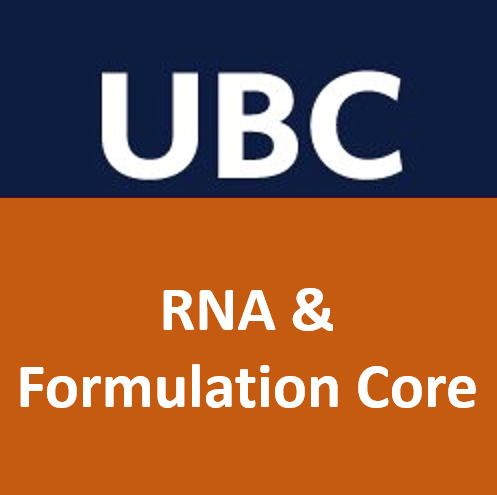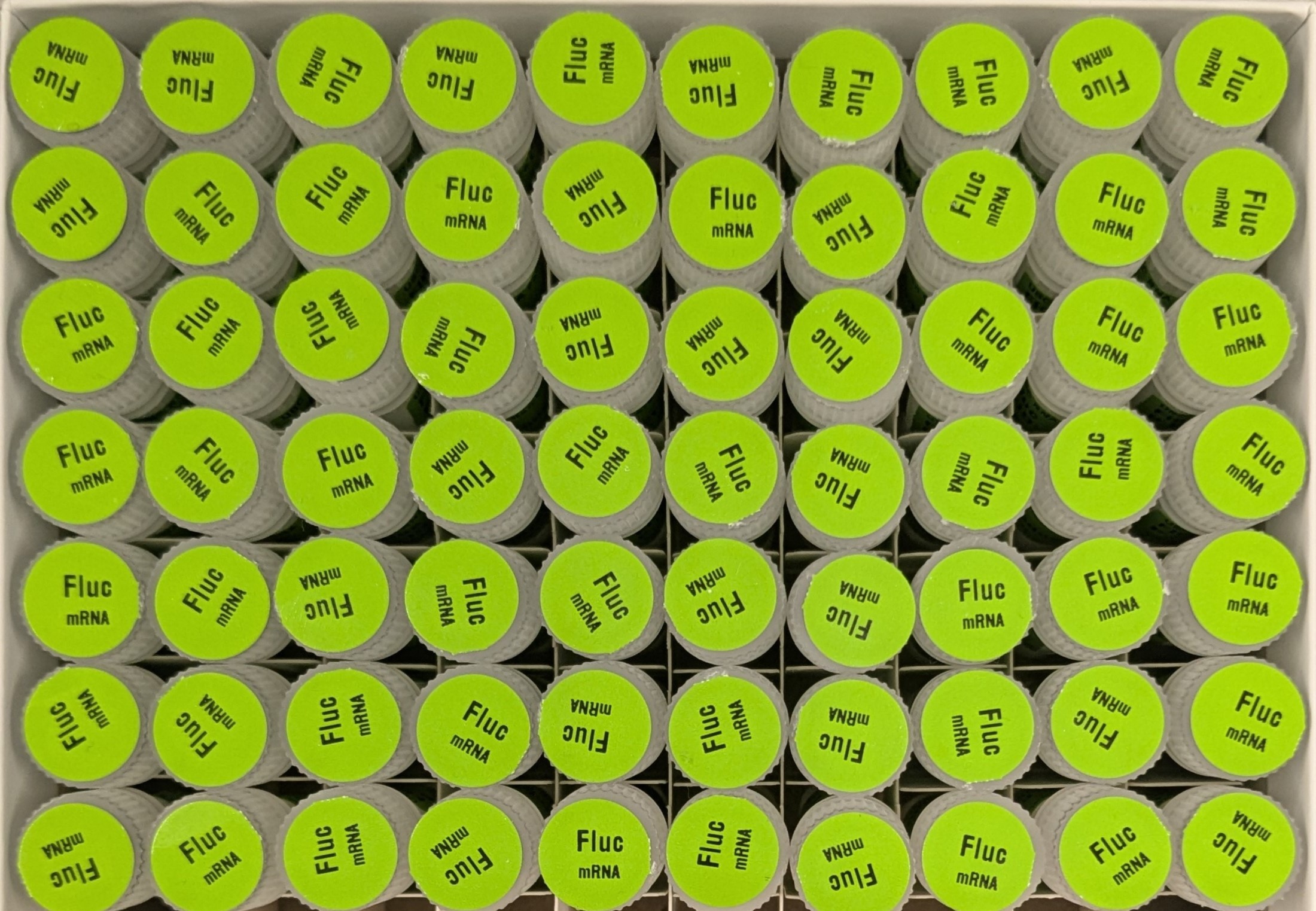
Need common RNA products?
All reporter RNA are for research use only and are prepared using N1-methyl-pseudouridine (1mΨ) for flexibility between in vitro and in vivo use. We strive to maintain an active stock or each product for same-day local pickup, but please inquire for availability.
Are you a UBC Researcher?
UBC Sign-in Required. Please inquire if you cannot access
Bioluminescent reporter RNA

Firefly Luciferase (Fluc)
The firefly luciferase gene encodes for the bioluminescence enzyme which uses the substrate, luciferin, to emit the characteristic yellow light observed in fireflies. Firefly luciferase and luciferin are non-toxic to most cells and has a half life of about 2-3 hours, making it an excellent reporter for in vitro or in vivo RNA delivery. Commercially available kits for firefly luciferase assays are readily available. Fluc reactions produce a “glow” type luminescence (long reaction, but dimmer).
More details
Natural Substrate: Luciferin
Availability: mRNA and saRNA. Early access circRNA available.
Functionally validated in vitro (Promega Dual-Glo) and in vivo (IVIS).
Image above: IVIS of our firefly mRNA expression in mice.

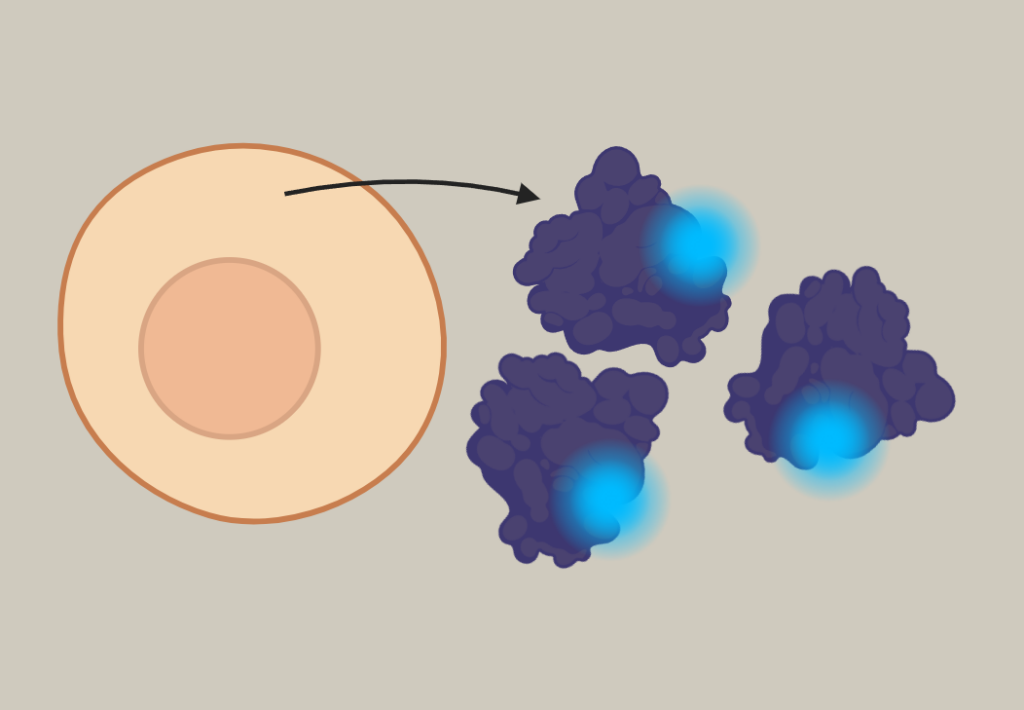
Gaussia Luciferase (Gluc) (Renilla analogue)
The Gaussia luciferase gene encodes for the secreted bioluminescence enzyme which uses the substrate, coelenterazine, to emit the light. Gaussia luciferase has high extracellular stability in cell culture; however, coelenterazine has lower water solubility compared to luciferin, an important consideration for in vivo studies. The enzyme and substrate are non-toxic to most cells commercially available detection kits for are readily available. Gluc reactions produce a “flash” type luminescence (short reaction, but bright).
More details
While the Gaussia and Renilla luciferases seem to have evolved independently, they are functionally interchangeable.
Natural Substrate: Coelenterazine
Availability: mRNA and saRNA. Early access circRNA available.
Functionally validated in vitro (Promega Dual-Glo Assay).
Fluorescent reporter RNA
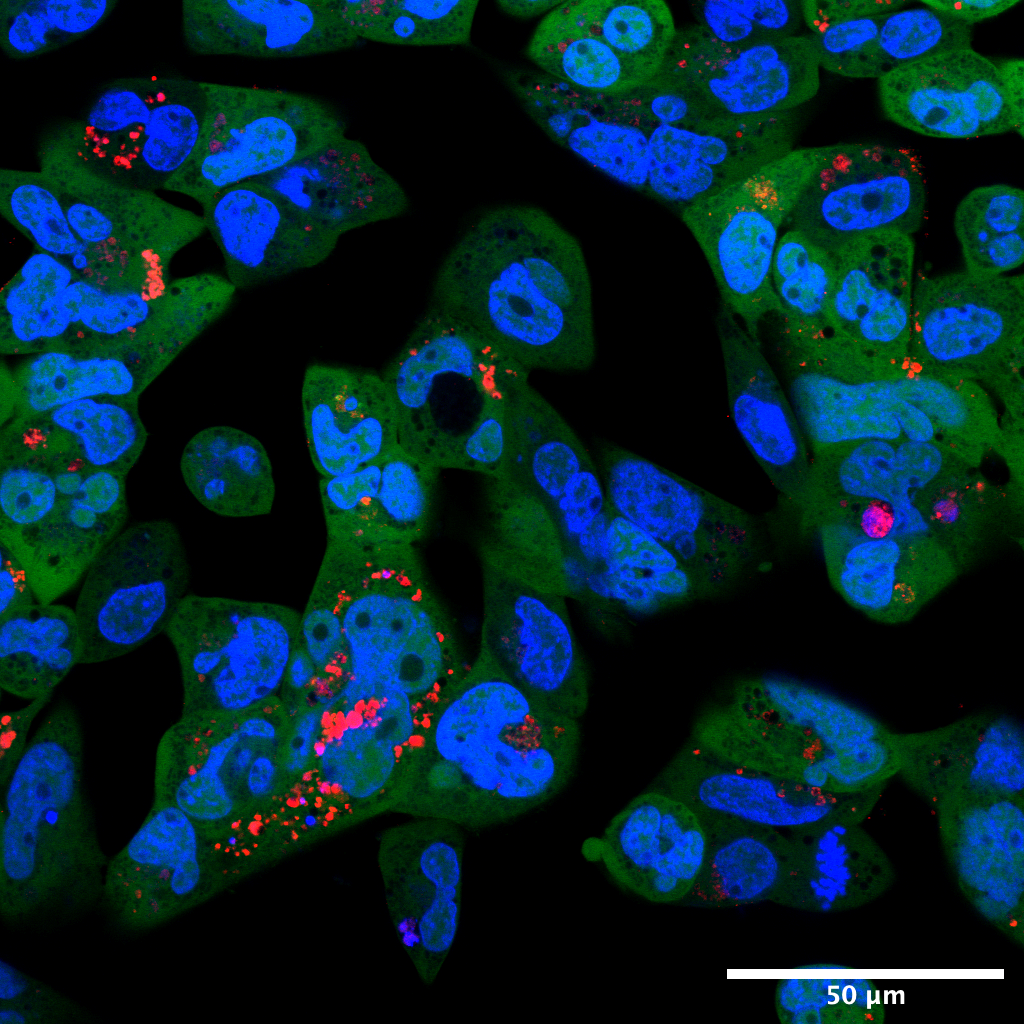
Enhanced Green Fluorescent Protein (eGFP)
Enhanced green fluorescent protein is a GFP derivative with improved folding efficiency at 37 °C, improving its utility in mammalian cells. It is a weak dimer with moderate acid sensitivity. See the FPbase for more information on fluorescent reporters.
More details
Excitation/Emission: 488 nm/507 nm
Availability: mRNA and saRNA. Early access circRNA available.
Functionally validated by flow cytometry and confocal microscopy.
Image above: Confocal microscopy of our Cy5 tagged eGFP mRNA in Hoechst 33342 treated Huh7 cells. Credit: Suiyang Liao, PhD.
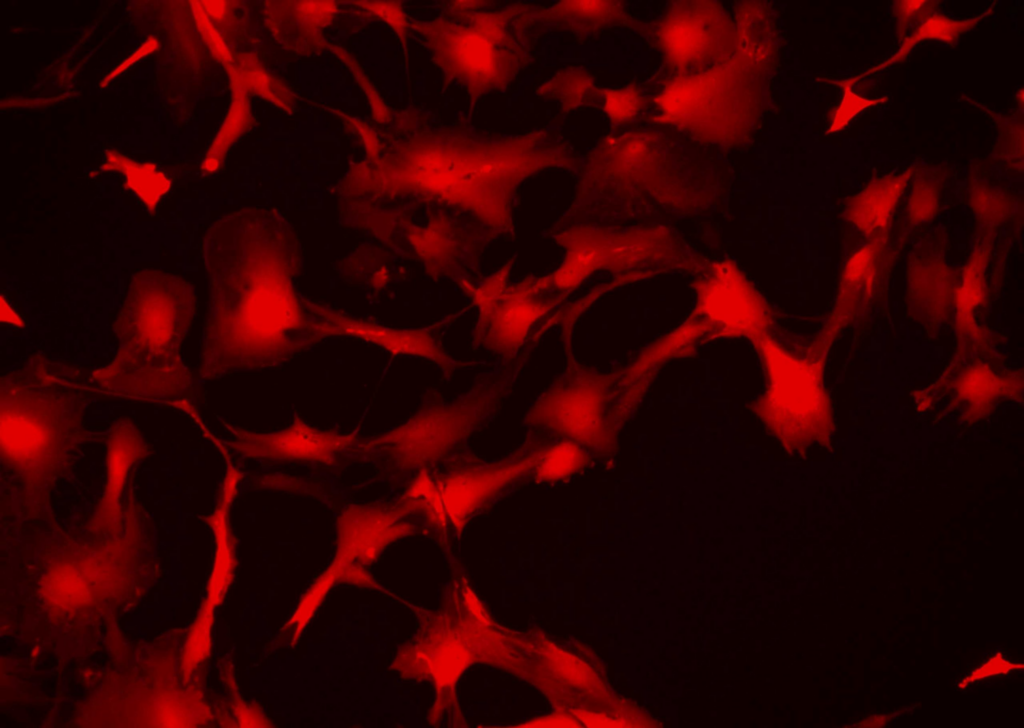
mCherry
mCherry is a red fluorescent protein derived from Discosoma sp.. It is monomer with low acid sensitivity. Having a longer excitation and emission wavelength than eGFP or mNeonGreen, it more effectively penetrates through tissues. See the FPbase for more information on fluorescent reporters.
More details
Excitation/Emission: 587 nm/ 610nm
Availability: mRNA and saRNA. Early access circRNA available.
Functionally validated by confocal microscopy.
Image above: Fluorescent imaging of our mCherry mRNA expression in primary mouse astrocytes.
Antigen RNA

Ovalbumin (OVA)
Ovalbumin was one of the first proteins to be isolated in pure form and has become a model antigen for immunology research. Encoded within a ribosome ready transcript, it is often used to evaluate vaccine efficacy.
Availability: mRNA and saRNA. Early access circRNA available.

COVID-19 Spike (Gen 1)
We offer a near-match Pfizer-BioNTech Comirnaty vaccine design as a benchmark for vaccine development.
Availability: mRNA, saRNA
